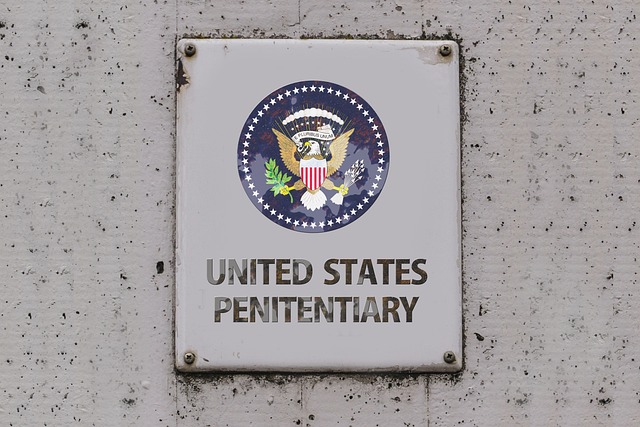Driving Under the Influence (DUI) laws vary significantly between rural and urban areas due to different enforcement strategies, resource availability, and public safety considerations. Urban regions have stricter regulations, quicker legal processes, and harsher penalties, while rural areas face challenges with prolonged investigations, aggressive asset seizures, and limited access to evidence collection. These disparities impact property forfeiture, sentencing, and the overall legal landscape for DUI offenses. Customized legal strategies are necessary to address these geographical and social context-specific issues, focusing on proportionality, due process, and tailored defenses in rural and urban settings.
In the vast landscape of drunk driving laws, a stark contrast exists between rural and urban jurisdictions. This article delves into the intricate differences in DUI forfeiture cases, exploring how population density impacts sentencing and penalties. We compare basic DUI law understandings, analyze property forfeiture practices, and present case studies highlighting challenges unique to both environments. Additionally, we offer strategic insights for challenging DUI forfeiture, providing a comprehensive guide for navigating these distinct legal territories, especially concerning DUI forfeiture case challenges.
- Understanding DUI Laws: A Basic Comparison Between Rural and Urban Areas
- Property Forfeiture: How Does It Differ in Rural vs Urban DUI Cases?
- Impact of Population Density on DUI Sentencing and Penalties
- Case Studies: Exploring Challenges in Rural and Urban DUI Forfeiture
- Legal Strategies for Challenging DUI Forfeiture: A Comparative Analysis
Understanding DUI Laws: A Basic Comparison Between Rural and Urban Areas

In both rural and urban areas, Driving Under the Influence (DUI) laws aim to protect public safety by preventing individuals from operating vehicles while impaired. However, there are distinct differences in how these laws are enforced and interpreted between these two settings. One key difference lies in DUI forfeiture case challenges; urban areas often have stricter regulations and more resources dedicated to enforcing them, leading to quicker legal proceedings and potentially harsher penalties for offenders. In contrast, rural communities might face challenges due to lower population densities and less accessible legal services, which can result in longer investigations and more opportunities for case challenges.
Moreover, the impact of impaired driving is felt differently in these environments. Urban areas, with their high population density, often have well-established support systems for victims and robust law enforcement networks. In rural settings, however, where distances are vast and support services may be scarce, the consequences of DUI can be magnified, affecting not just the individual but also the tight-knit communities they belong to. This disparity underscores the need for tailored legal approaches that consider both geographical and social contexts in DUI cases.
Property Forfeiture: How Does It Differ in Rural vs Urban DUI Cases?

In rural and urban DUI cases, property forfeiture laws vary significantly. Rural areas often have stricter rules, leading to more aggressive asset seizures. This is due to limited resources and a belief that owners are more likely to be complicit in criminal activities. As a result, homes, vehicles, and other valuable assets can be forfeited even with minimal involvement from the owner. In contrast, urban regions tend to have more nuanced approaches, focusing on proportionality and ensuring due process. The vast number of residents and cases means a more balanced application of forfeiture laws, considering each DUI case’s unique circumstances.
DUI forfeiture case challenges differ greatly between these settings. Urban areas often see legal battles centered around procedural fairness, where defendants argue that their rights were violated during the seizure process. Rural cases, on the other hand, frequently raise issues of excessive punishment and lack of individualized assessment. These differences highlight the need for tailored legal strategies, with urban defense attorneys emphasizing procedural errors and rural lawyers advocating for more flexible interpretations to protect owners from overly harsh consequences.
Impact of Population Density on DUI Sentencing and Penalties

In regions with higher population densities, like urban areas, the impact of DUI (Driving Under the Influence) offenses on sentencing and penalties is often more severe. This is primarily due to the increased risk and consequences associated with drinking and driving in heavily populated spaces. The close proximity of people, vehicles, and infrastructure means that the effects of impaired driving can be far-reaching, leading to stricter laws and harsher punishments. For example, urban DUI forfeiture cases may result in heavier fines, extended license suspensions, or even imprisonment, reflecting the heightened concern for public safety.
In contrast, rural areas typically have lower population densities, which can influence how DUI laws are enforced and penalties are determined. Lower population means less traffic congestion and potentially fewer witnesses to impaired driving. This dynamic could lead to more lenient sentencing in some cases, but it also presents challenges for law enforcement when investigating and prosecuting DUI offenses. As a result, rural DUI forfeiture case challenges often revolve around gathering sufficient evidence and ensuring due process, considering the reduced social and physical impact of such offenses compared to their urban counterparts.
Case Studies: Exploring Challenges in Rural and Urban DUI Forfeiture

In rural areas, where communities are often tightly knit and law enforcement resources may be limited, DUI forfeiture cases can present unique challenges. Limited access to public transportation and higher rates of personal vehicle ownership mean that individuals charged with DUI may face fewer alternatives to driving under the influence. This can lead to longer wait times for impoundment services, potentially allowing accused individuals more time to evade arrest or dispose of evidence linked to their case. For example, a 2020 study in Iowa revealed that rural DUI arrestees were less likely to have their vehicles impounded immediately compared to their urban counterparts, partly due to the longer distances they needed to travel to reach impound lots.
Conversely, urban environments present distinct challenges regarding DUI forfeiture. Higher population densities and efficient public transportation systems may make it easier for law enforcement to quickly locate and impound vehicles involved in DUI incidents. However, this can also lead to overburdened impound lots and longer processing times due to the sheer volume of cases. A case study in Los Angeles highlighted the issue of vehicle impoundment as a disincentive for low-income residents who rely on their cars for employment and daily necessities. The study suggested that alternative strategies, such as community education programs and enhanced public transportation options, could be more effective than strict vehicle forfeiture policies in addressing DUI challenges without disproportionately affecting vulnerable populations.
Legal Strategies for Challenging DUI Forfeiture: A Comparative Analysis

When it comes to challenging DUI forfeiture cases, strategic differences emerge between rural and urban settings. In rural areas, where law enforcement resources might be more limited, defendants may face unique challenges in mounting a robust defense. Legal strategies often need to be creative, leveraging local community knowledge and focusing on issues like road condition quality and potential bias in police practices. For instance, questioning the reliability of field sobriety tests in uneven terrain or poorly maintained roads could offer a compelling line of defense.
In contrast, urban DUI forfeiture cases may present different hurdles due to higher crime rates and more saturated legal markets. Defendants might need to explore complex legal avenues, such as challenging the admissibility of evidence based on Fourth Amendment violations or questioning the procedural fairness of police actions. Strategic challenges could include motions to suppress breathalyzer results due to potential calibration issues or contending that police failed to follow proper protocols during traffic stops, thereby tainting the entire case. These varied legal strategies reflect the distinct characteristics of rural and urban DUI enforcement environments.
In conclusion, while rural and urban DUI laws share fundamental principles, distinct differences in property forfeiture, sentencing, and case handling create unique challenges. Understanding these disparities is crucial for both legal professionals and individuals facing DUI charges. By examining real-world case studies and exploring strategic defenses, individuals can navigate the complexities of DUI forfeiture, ensuring they receive fair treatment regardless of their location. This comprehensive approach highlights the importance of knowledge and advocacy in mitigating the impact of DUI offenses across diverse landscapes.






